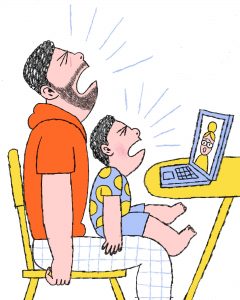 The pandemic caused a painful disruption to public education. From mid-March to mid-April, virtually every school district in the country closed its doors and sent children home to a largely failed experiment in virtual learning. The negative effects of that experience were felt much more acutely by the almost seven million US students with disabilities and their families.
The pandemic caused a painful disruption to public education. From mid-March to mid-April, virtually every school district in the country closed its doors and sent children home to a largely failed experiment in virtual learning. The negative effects of that experience were felt much more acutely by the almost seven million US students with disabilities and their families.
We were all caught by surprise by this crisis, and most of us gave a pass to school district officials for not being well-prepared for last semester’s chaos. But it has been five months since schools closed, and patience is running low. Families expect more from their districts this fall, and if they don’t get it, forgiveness may be replaced with retribution.
In the world of special education, retribution looks like lawsuits and consent decrees. And those costly endeavors require much more district time, energy and funds than the small amount of advance planning and implementation support that would prevent them.
School districts should have already developed targeted special education delivery plans for students with IEPs and 504s. But even if they haven’t, it’s not too late to do so now.
By analyzing special education data, creating targeted strategies to address different family situations and IEP services, and conducting strategic outreach to parents and guardians, school districts can better address special education needs, and improve the outcomes for those students in a crisis-constrained environment.
When the pandemic hit, there was a general recognition that some level of intensive technical assistance and even embedded, hands-on support was needed by many districts. (Though not all TA is created equal, but that’s another blog!) Well, newsflash: we are still in the midst of a disaster, and districts should still be functioning with a disaster response and recovery mindset. The augmentation of districts’ analytical, planning, and implementation capacity remains a high priority, and special education provision is a case in point.
Most districts focused their planning efforts on maximizing the number of students they might safely return to schools, or on ensuring that most students have the equipment necessary for a remote learning game plan. Or both. But when it comes to special education, those approaches are optimizing for the wrong things.
More sophisticated planning could prioritize in-person learning options for those students for whom remote learning is impossible, figure out the most efficient way to deliver services to that much smaller group, and then move to the next tier of students, based on prioritizing in-person needs, not on maximizing convenience to the highest number of students.
Such planning is more complicated because it requires a “needs assessment” level of engagement with families well beyond the preference polling most districts relied upon. But it is doable, even now, especially in districts that are starting this year off with empty buildings. By geocoding special education service needs by student addresses, districts can identify the optimal placement of clinic-style centers for the provision of services that must be delivered in person. Kids with similar special needs at all grade levels can rotate through the same site location without the constraint of school type.
The more sophisticated the plan, the more complex the logistics will be. In large districts, in particular, specialization can be difficult and costly. In the case of special education provision, management of that complexity is not just educationally important, it’s required by law. Current processes need to be amended to enable accurate and timely tracking of services, and continuous improvement regimens, in very short cycles, should be applied to figure out what’s working and what’s not.
That type of management structure over the delivery of special education services during this COVID-altered school year will improve education outcomes for kids and go a long way to defending districts against claims of neglect or ineptitude.

Leave a Reply
The comments are closed.